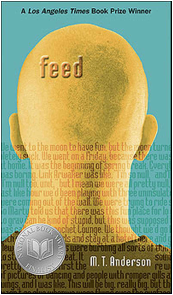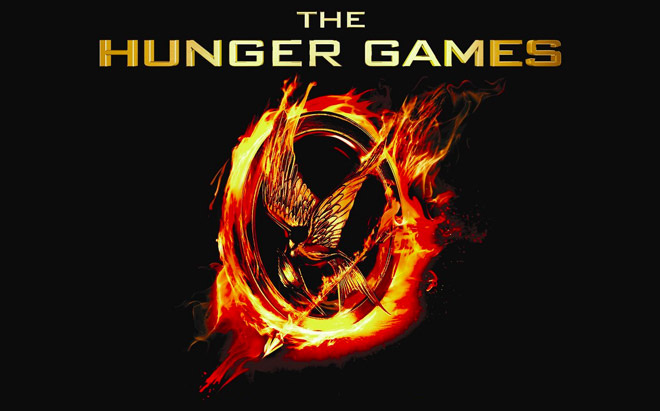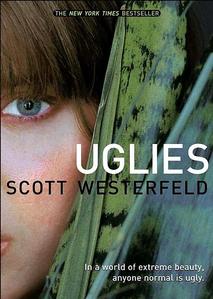Why dystopia?Utopian and dystopian studies comes from a deeply historical context whereby people of all walks of life began imagining possible worlds where political, economic, and social conditions were altered. In United States history, utopian novels that were published during the antebellum age (1820s and 1830s) espoused the possibility to re-imagining social order. Communities built by the Shakers and Oneidas lived out their utopian dreams. Dystopian literature, burgeoning during the late 20th century reflected an increase in fear about political and economic turmoil. Novels like 1984 and Brave New World emphasized the relationship between power, technology, individualism, and conformity. Resistance and reform had a very different face after the social movements in the 1960s and 1970s. Dystopian novels play with constructs of time, space, history, and geography. The worlds seem so much like our own or at least what our world can be. While many of the novels written in the Cold War era reflect fears about conformity, dystopian novels written in the early 21st century engage these topics a little differently. Surveillance and ideological repression look different in 2015 than it did at the height of the Cold War. The battle between capitalism, socialism, and communism has been subsumed by neoliberalism and globalization. One person standing up for what they believe triggered marches and protests that were televised around the country in the 1960s and now one Tweet or YouTube video goes viral where the world is now watching global affairs. YA dystopian novels are unique in that they center on the actions of youth as they participate in resistance against totalitarian leaders. Each novel's world is constructed on some kind of sameness or conformity. The hero's or heroines never quite feel like they fit in with the communities expectations and they often find ways of escape expectation. Rather than accepting societies norms, that main characters question their world and seek alternatives. But no dystopian novel is "perfect," Some might say that the genre is itself a tool of resistance whereby authors offer social criticisms of our own world. However, a deeper analysis could reveal that the novels only reinforce some of the underlying economic and social tensions that youth experience today.
I believe that history teachers can use dystopian novels to help students see history in action. Sometimes history curriculum seems boring or outdated. Despite what some might say about the literary quality of some young adult novels, I find that dystopian fiction provides a doorway to connecting our students to our content. The language and vocabulary is similar between the novels and history curriculum. We can engage students in discussions about the past AND in imagining the future by integrating fiction into our classrooms. Books vs. FilmsAfter taking a Film & Literature course in college, I stopped making broad assumptions and arguments about whether or not the book or the movie was better. Essentially, it is like comparing apples to oranges. Privileging one over the other de-values both as artistic representations and tools of storytelling. Are there times where I enjoy the book more than the film, yes. But there are also films that do an amazing job in adapting novels so that my enjoyment and appreciation grows and changes. We have to view media as separate because they each have different goals and achieve those goals using different tools. We can study films in a similar way that we study novels by questioning narrative structure, format, characterization, and themes. Novelists work with words whereas film makers use music, sounds, and color to tell a story. Questions to be asked of dystopia & history curriculumPower
Knowledge
Surveillance Culture
Codification & Discrimination
Post-Capitalism & Consumerism
Novel ideas
Dystopian shortcomingsMy final thoughts come just after seeing the final installment of the Hunger Games films that opened this weekend. After reading 20+ dystopian novels (marketed for adults and youth), I have been left with one question: what happens after the rebellion? Almost all of the novels focus on resistance efforts led by characters who do not agree with the government's actions. But what is missing is any notion of HOW TO REBUILD. People join resistance movements to fight for their rights. Totalitarian governments are deposed. Evil leaders are killed. But the books and films always end there. There is no transfer of power. There is no explanation for what kind of society is re-imagined. The heros and heroines go home and live their lives out of the spotlight.
This feels exactly like a traditional history classroom. We spend time studying events of the past and do little to institute changes that will make the world more equitable. We fail to act on our knowledge in creating a better world. I love reading dystopian fiction because I get to engage in imaginative worlds that challenge me to think about our own. But we can't stop at resisting. We must also engage in creating and imagining.
1 Comment
Warning: Part 1 of this post is a political statement. But... Part 2 will have some lesson plan ideas. Civic ImaginationWe live in a time (as was the same with our predecessors) where we are inundated with tragic events that seem to highlight the angry, competitive, frustrated, and hateful aspects of human interaction. News media frames the human experience by focusing on sensational events. And by no means am I devaluing horrific situations that occur across the world in Syria or France, or even here in the United States. What I want to highlight is the need for a shift in our thinking about history and history education. While I watch the education pendulum swing towards STEM, no doubt because of the high demand for job applicants in related fields, what most ignore is how the pendulum swings away from humanities courses like history, political science, sociology, and literature. I struggle to support an increased emphasis on STEM based on an economic argument. The increasing wage gap and opportunity gap between economic classes, people of color, and genders continue to widen despite the push for STEM in schools. We need a more radical approach in dealing with constant conflict and debate regarding income disparity, race wars, police brutality, gender discrimination, and religious fundamentalism. I truly believe that we are at another crossroads for history education. Because of heightened awareness regarding political, social, and economic conflict, NOW is the time we must engage in a new kind of historical thinking. I remember studying history (sometime guilty because I teach history) as an object of the past. People before us made decisions that caused our current situation. Some historians might think that I am erroneously encouraging presentism; however, I believe that we need a way to talk about history as if we are creators and dreamers. We need to think about history, not just in the past, but as an analysis of the present and most importantly the chance to imagine possibility. What is the point in studying the past if there are no effects on our present lives and the world we have the power to create? My first goal in exploring this topic is to talk about, what Henry Giroux calls, "civic imagination." Many teachers feel that their classrooms have been drained of creativity, imagination, and free thinking. Increased "accountability" measures have tremendously affected what we value as knowledge and what is taught. As history teachers, we have focused on memorization and recall that our students do not even practice the act of engaging as historians. This idea is shifting as more research is being done with respect to thinking, reading, and writing like historians. However, I believe these skills still limit our understanding of history as the stuff of the past. We need a language that engages our ability to think and create. We need a driving force that encourages hope through the language of possibility. We need to practice building our civic imagination where our students are building relationships based on respect, equity, and justice. Civic imagination is connected to civic engagement, whereby our students see action as a necessary step is studying history. We can't just think, read, and write. We must also do. Giroux says we need a "radical imagination" that encourages civil literacy and provides opportunities for personal and social transformation. Here is an excellent passage that summarizes Giroux's point: "The importance of civic education in the shaping of democratic values and critical agents cannot be underestimated and functions as the basis for developing specific modes of resistance and larger social movements. Cultivating the radical imagination, civic education and engaged and critical modes of literacy and agency are central to producing an informed citizenry, but even more so to constituting any viable notion of politics. Education must be considered central to any viable notion of politics. This suggests that progressives make clear how cultural apparatuses and media sources work pedagogically to produce market-driven subjects who are summoned to inhabit the values, dreams and social relations of an already established repressive social order [....] The time has come to develop a political language in which civic values, the radical imagination, social responsibility and the institutions that support them become central to invigorating and fortifying a new era of civic courage, a renewed sense of social agency and an impassioned political will." Framing Our LessonsFrame #1 - So What? One challenge I am beginning this year is to add a "so what?" question at the end of each class. My hope is that my students and I can make direct connections between the content we cover in class with current events. So many of my students say they do not see the point in studying history. Adding the "so what?" will hopefully ground the content in contemporary contexts. So when we are studying federalism, the first Two Party system, and the debate between Jefferson and Hamilton, all I have to do is turn show a clip from the current GOP and Democratic presidential debates and highlight the arguments about the power of federal and state governments. We can talk about the legalization of same-sex marriage and marijuana as conflicts regarding governmental powers. This first frame indicates the importance of using current events in our history classes. Frame #2 - What if? An additional question we might ask of our content is "what if?" an event in history or a person's decision had a different outcome. This line of questioning directly infuses civic imagination whereby students are imagining new and possible worlds that are dependent on significant political, social, and economic choices. This question blurs the lines between fact and fiction. Some history teachers might fear when students reach into the future to imagine what would happen if Hitler had won World War II. The purpose of this question is not to re-write the past. It is instead of find what I call "points of divergence" so that we can write the future. We are the lives of history. Our choices have a profound impact on what the world will look like tomorrow, next year, and in 100 years. The people we study in history had this same idea. FDR imagined a different United States than the one that existed after the stock market crash in 1929. It took the imagination of numerous people to foresee the effects of the New Deal. Frame #3 - Now what? The last question I want to ask in my planning is "now what?" How can we make history a subject that encourages participation? In the last couple years, there has been a push for civic engagement (C3 Framework) and defining what it means to be an engaged citizen. I am wary of the use of the word "citizen" in this framework, but I also have this same fear with the term "digital citizenship." This is due to my experience teaching in a community where many of my students are undocumented and will never have the chance at becoming "citizens" based on the current political climate. It makes me uncomfortable to teach the concept of "citizenry" when the idea remains an illusion or an unreachable goal for many students. However, I do believe that the qualities outlined in the framework are valuable - my objection is purely based on language and the effects word choice have on people's inclusion or exclusion from identity membership. Asking "now what" allows me to encourage students to see history as action. We need to think about action steps that can accompany our study of historical events. We constantly talk about people who did something in history, but often fail to encourage action as a responsibility. One organization that has helped me think about the value of student voice and student perspectives is SoundOut. Our schools and communities would benefit from responsibly and ethically implemented student-led research about our local communities and what can be done to change the world,one choice at a time. Next StepsI am working on some concept maps that can be used to help frame history lesson plans using these three questions. I am also working on some graphic organizers and instructional tools that will engage students in the kind of thinking and doing proposed.
But the most important work that I am completing right now is my doctoral dissertation. I worked with a group of eleven high school students to examine the significance of dystopian fiction and how fictional narratives influence our thinking about issues related to identity formation, power struggles, and resistance movements. There were some great findings associated with the use of dystopian fiction in history/social science classes that engage in the three questions I highlighted. More on this to come. If one were to visit the "traditional" history class, you might find the teacher at the front of the room pointing at the PowerPoint slides while students copied down whatever information was posted. (Side note: Why do we have students copy notes when it would be much easier to share them online or just print a copy?) This kind of classroom - influenced by industrialism and economic necessity - ends up being a dumping ground of information.
I'll admit that in the last few years I have begun to really questions some of the "traditional" tasks that I forced students to accomplish. The first time I taught AP United States history, I required my students to memorize all of the Presidents, their political parties, and years in office. It was a fun challenge and I enjoyed watching students write stories, make dances, or memorize what sounded like binary code to pass. It was a 100% or nothing quiz but they could take it as many times as they want. Finally, a couple students asked me if I could pass and I admitted: absolutely not. Then why give it? Do they really need to memorize all of that information? If I needed to remember when President Jackson was in office and who succeeded him, I would just look it up on Wikipedia. There are so many questions that we have about history. Granted, I remember a lot of information because I teach the subject year after year, but there are times I am stumped. And each year I have to review those topics that I don't really like. Yes, there are historical topics I don't enjoy (sorry American Revolution & Civil War historians). So instead of focusing my attention on getting students to memorize, I started looking at flipped learning and really teaching about access to information. Rather than reading every word of the textbook, I recommend a shortened version in combination with support videos. In class, we focus on activities. I love using discussion models, word sorts, map activities, sculpture, visualization methods, etc. It's in class where I can watch students struggle with content and learn how to mine the massive amounts of information to decide what is most important. To teach about primary source documents, I developed a structured discussion protocol. I will be presenting it at a few conferences this year and hope that it might be helpful in any history class. My presentation and resources are linked here. This activity his pretty intensive, but it really challenges students to become the historians. They can focus on a text and dive into the author's or artist's world. The structured academic discussion I will be presenting is just one model that I use in class. I find that using protocols requires students to synthesize a lot of information into a very focused and purposeful discussion. And in the last few years I have seen some (slight) improvement in writing. The link between speaking and writing is sometimes absent in classes. Teachers often skip from reading to writing and forget that there needs to be time given for students to talk about the content. |
Archives
January 2019
Categories
All
|
Proudly powered by Weebly




 RSS Feed
RSS Feed